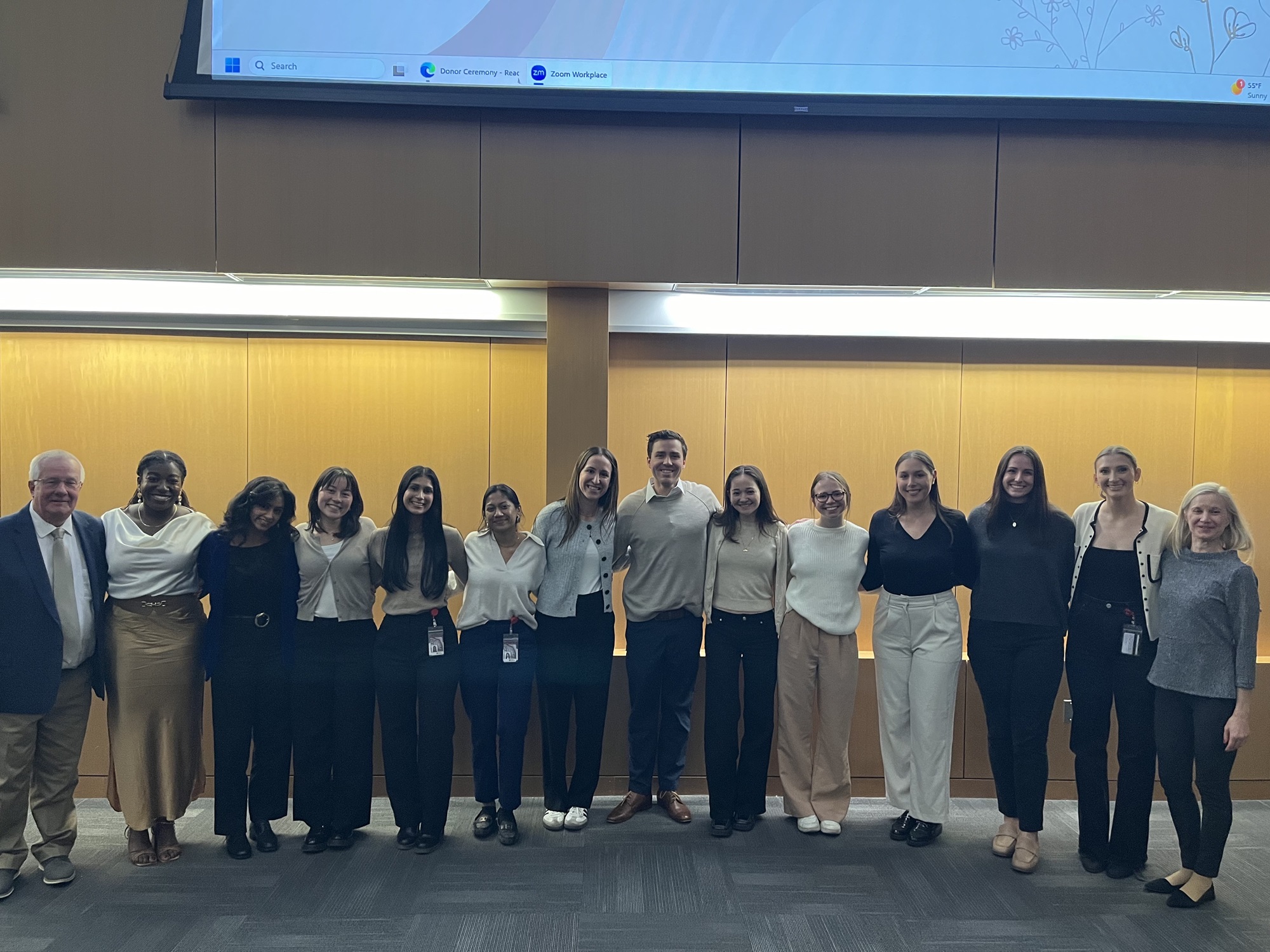The medical school experience, for many MD and Physician Assistant (PA) students at the Lewis Katz School of Medicine, begins in earnest on their first day of an intensive course called Fundamentals of Clinical Anatomy and Imaging.
For the Class of 2028, that day arrived last August 12, when they filed into the bright, fourth-floor anatomy labs, gathered in small groups around their assigned tables, and met their human cadavers - or donors. And so began their eight-week endeavor to better understand the body’s anatomical structures through systematic dissection and examination.
Two months later, on November 15, faculty and first-year medical and PA students gathered in the MERB auditorium for Donor Remembrance Day, a student-organized ceremony designed to honor the donors’ memories and contributions. The event also helps the students process their experience with the course and the emotions it elicited. Some of the donors’ relatives were in attendance. Others watched on Zoom.
“This ceremony is a platform for us to celebrate the interconnectedness of humanity and honor our donors’ profound impact,” said Katie Cronin, a first-year medical student who was one of the 15 students who planned the ceremony. “Theirs was the truest form of altruism, and they were teachers, even in death.”
"The lessons, enabled by the donors, form the foundation of a Katz School medical education”, said Amy J. Goldberg, MD, FACS, the Marjorie Joy Katz Dean of the Katz School, in a recorded video played during the ceremony.
“Anatomy is the very first course on this path, filled with both excitement and uncertainty,” she said. “It’s where our students come to understand the human body in a profound way, learning the shared anatomy and physiology that connects all of us.” Steven N. Popoff, PhD, Chair of the Department of Anatomy and Cell Biology, said in a speech given at the ceremony that the dissection of human cadavers remains a vital educational component for medical and physician assistant students, even as a plethora of digital simulations have become more sophisticated.
“The students’ first encounter with the human donor establishes the reality of a human life and connects them to their ultimate objective, the living patient,” Dr. Popoff said. “By confronting them with the tremendous responsibility they will assume in treating that patient as their care provider, the donor-student interaction also affords the opportunity to be introduced to the concepts of humanistic care and the comprehension of death and dying.”
The beginning of medical school can be incredibly overwhelming. As much as Anna Rose Oettinger a first-year medical student and one of the ceremony’s organizers, mentally prepared for her first day in the anatomy labs, she said she was still surprised to find herself feeling shocked and even a little afraid when the moment came.
“It was my first experience with a proper donor, and it felt totally foreign,” she said. “However, that initial awe quickly gave way to an incredible excitement and curiosity” that enabled her, in time, to develop a “visual map” of the human body, a key component of her medical education.
Oettinger eventually realized that everyone else standing around the table, her dissection group, was essentially having the same reaction, and it helped spur a bond that quickly strengthened. Cronin referred to the group as her “second family,” although this was not her first experience with a human cadaver. She worked with one as an undergraduate. Having that experience, she said, empowered her to bypass the shock and embrace the extraordinary learning opportunity before her.
To support learning opportunities throughout the process, students are told little about their donors beyond age, occupation, and cause of death. Cronin’s donor had died of colon cancer. She said she was “really interested and excited to see” what the disease looked like. As her group’s dissection progressed, they also discovered a hernia, staples in the donor’s spine, and a pacemaker.
“Every time, I just found myself being awestruck of how often things go right, because there are so many ways that things can go wrong in medicine,” Cronin said.
In all, 57 donors were honored during the ceremony. As their names were read aloud, one by one, student representatives placed white roses in vases at the front of the auditorium.

